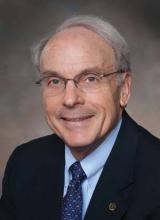WASHINGTON – The American Medical Association says that it is going to spend millions of dollars over the next 5 years to help physicians and patients do a better job of preventing and managing cardiovascular disease and diabetes.
AMA President Jeremy Lazarus announced the initiative at the National Minority Quality Forum’s Health Disparities Leadership Summit here, in part, because the two conditions disproportionately affect minorities. They have a significant impact on American life. Dr. Lazarus noted that 100 million Americans have prediabetes or diabetes – that’s one-third of the U.S. population. One of every three deaths is caused by cardiovascular disease. The cost of treating diabetes and CVD runs at least $500 billion a year, said Dr. Lazarus.
"The AMA will dedicate resources, expertise and reach to reduce the significant patient suffering and cost burdens associated with these diseases," said Dr. Lazarus.
Initially, the program will focus on helping physicians and patients focus on three risk factors for CVD and diabetes: hypertension, blood glucose, and lipids. The AMA plans to spend $6 million on the initiative in the first year alone, said Dr. Lazarus, in an interview.
The AMA will continue to evaluate the program as it goes along, possibly tweaking the goals, and eventually adding other conditions, said Dr. Lazarus. And, for physicians who participate, there may be another benefit: financial rewards for putting patients on the path to better health. Dr. Lazarus noted that many accountable care organizations and insurers were providing incentives for preventing and managing chronic conditions. "The health care system is moving in this direction," he said.
In hypertension, the AMA seeks to meet or exceed the goal of the Dept. of Health and Human Services’ Million Hearts campaign. That program aims to bring 10 million more Americans under control by 2017. To do that, the AMA has enlisted the Armstrong Institute for Patient Safety and Quality at the Johns Hopkins School of Medicine. The Armstrong Institute, directed by Dr. Peter J. Pronovost, is best known for creating a program to reduce central line-associated bloodstream infections in intensive care units.
The Institute will be sending people out to meet with physicians to figure out what factors in their patient population contributes to high blood pressure, said Dr. Lazarus, in the interview. That information, in conjunction with evidence-based interventions, will be used to help physicians determine how to best help their patients. "We think [physicians] will welcome the opportunity to work with the Armstrong Institute," Dr. Lazarus said.
For diabetes, the AMA is working with the YMCA to increase referrals to the evidence-based prevention program offered by the organization. The AMA wants to have 10,000 additional participants in the program by July 2015.
"Connecting physician practices to the YMCA’s Diabetes Prevention Program will ensure that those at greatest risk have the opportunity to prevent or delay diabetes," said Jonathan Lever, vice president of health innovation and strategy, YMCA of the USA, in a statement. "This novel collaboration between medical practices and community-based programs could prove to be a model for promoting health and wellness."
At the disparities meeting, Dr. Cedric Bright, director of special programs at the University of North Carolina, Chapel Hill, said that YMCA’s are not always in communities of color, and he suggested that the AMA also work with Boys and Girls Clubs. Dr. Lazarus agreed, and said, "We’re going to be looking for all kinds of partners to get the information out."
Dr. Rodney Hood, president of the Multicultural Primary Care Medical Group, an independent practice association in San Diego said he congratulated the AMA for starting the initiative. "Dr. Lazarus, I think this is a big deal," said Dr. Hood.
On Twitter @aliciaault


